In a few previous years (#1, #2), I decided to do a fresh take each time on what the best Linux distribution was for gaming - so I'm back for a 2025 edition of the article that will cause you to tell me how wrong and terrible I am.
What's changed? Well, quite a lot actually. Both previous times I firmly suggested going with plain Ubuntu. However, time moves on, and the software world evolves rather quickly. So I have a new recommendation for you! Why am I even writing this? Sadly, there's still articles out there pushing for tiny completely random fringe distributions and plenty with stupidly outdated and republished information to get to the top of Google.
My current home for a while now, and what I'll recommend you pick up, is Kubuntu. It has all the goodies and support of plain Ubuntu, but with the KDE Plasma desktop environment, which is the same one used on the Steam Deck's Desktop Mode. It has an interface that will be much more familiar to people coming over from Windows, it's more customizable (if you want it) but with a sane default setup that just gets you going quickly.

The latest Long Term Support (LTS) version of Kubuntu, Kubuntu 24.04.1, is supported with security and maintenance updates until April 2027. So you can install it and basically forget about it and keep it running and secure for years to come. However, you're likely better off with Kubuntu 24.10 which is more up to date, if you're okay upgrading again when the next version of Kubuntu comes out (Kubuntu 25.04) which is around April 17, 2025. Either way, both work well.
I've been through Fedora, Manjaro, Linux Mint, plain Ubuntu, Arch and many others over the years. No Linux distributions is perfect and they all come with their own set of quirks and problems, just as Windows has its own set of unique issues. To me, Kubuntu just offers the best all around middle-ground of everything you need to get going.
People will argue about Snaps, but for the majority of normal users — it just doesn't matter in the slightest. I use the Spotify, Thunderbird, Telegram and other Snaps and they work great and are kept nicely up to date without me even needing to do anything.
I will suggest though, that you enable Flatpaks from Flathub, so you get the best of all worlds and access to even more easily installable packages. It's incredibly easy to do as well.
You can download Kubuntu from their website.
If you need help and support for Linux and Steam Deck gaming, you can try asking in our Forum and Discord. Don't forget to follow me on Bluesky and Mastodon too while you're at it.
Don't agree with me? That's fine! The benefit of Linux is that there's truly no one-size-fits-all. Leave a comment to tell me how wrong I am. You're still wrong if you disagree though.
This article is just not true at all what so ever.Thanks for the laugh. But this type of over-the-top comment is exactly why such an article exists. Suggesting a small distro, with a small team, that builds on top of a rolling distro...just, no. This is not what should ever be suggested to normal users.
Last edited by Liam Dawe on 3 Dec 2024 at 7:12 pm UTC
This article is just not true at all what so ever.
Ubuntu is one of the worst distro right now due to snaps and mostly outdated packages and kernel and drivers.
The best right now is cachyos which is the most optimized distro to date and it's the most user friendly!
Optimized Performance: CachyOS is designed with performance optimization in mind, making it ideal for gaming. It includes various kernels and desktop environments tailored for gaming, ensuring smooth and responsive gameplay.
Easy Installation: Setting up CachyOS is straightforward. It comes with a meta package that includes all the necessary gaming-related packages, making the installation process quick and hassle-free.
Wide Range of Software: CachyOS provides access to a vast array of gaming software and tools, including emulators, game launchers, and performance monitoring tools.
Active Community: The CachyOS community is active and supportive, offering help and advice to users. This makes troubleshooting and getting the most out of the distro easier.
Regular Updates: CachyOS receives regular updates, ensuring that users have access to the latest software and security patches. This keeps the system stable and up-to-date.
Customizability: Users can customize their CachyOS experience to suit their specific needs. Whether you prefer a minimalistic setup or a feature-rich environment, CachyOS allows for extensive customization.
Focus on Gaming: Unlike other distros that cater to a broad audience, CachyOS is specifically designed for gamers. This focus ensures that gaming performance is prioritized and optimized.
User-Friendly Interface: Despite its powerful capabilities, CachyOS maintains a user-friendly interface, making it accessible to both beginners and experienced users.
Support for Multiple Desktop Environments: CachyOS supports various desktop environments, allowing users to choose the one that best fits their workflow and preferences.
Community-Driven Development: The development of CachyOS is community-driven, meaning that user feedback and contributions play a significant role in shaping the distro. This ensures that the distro evolves to meet the needs of its users.
Might wanna do better when comparing distros
also the second best distro is pikeos4 and 3rd nobara 40
This article is just not true at all what so ever.
Ubuntu is one of the worst distro right now due to snaps and mostly outdated packages and kernel and drivers.
The best right now is cachyos which is the most optimized distro to date and it's the most user friendly!
-- SNIP --
Focus on Gaming: Unlike other distros that cater to a broad audience, CachyOS is specifically designed for gamers. This focus ensures that gaming performance is prioritized and optimized.
-- SNIP --
I removed the parts that also apply to every mainstream distro over the past 14 years. I debated about the claim for specific optimizations, but then I realized that there aren't any hard numbers that I am aware of that make indicate they make much of a difference and that they can be applied at will on top of mainstream distros if they matter.
I am sure CachyOS is a good OS and all, but maybe let's not claim it's some kind of a panacea? The aggressive distro-warring is very passé, we have moved on as a community and become more civilized after we realized we can just mock Manjaro instead.
CachyOS
PikaOS
Nobara
:-)
This article is just not true at all what so ever.
Ubuntu is one of the worst distro right now due to snaps and mostly outdated packages and kernel and drivers.
The best right now is cachyos which is the most optimized distro to date and it's the most user friendly!
-- SNIP --
Focus on Gaming: Unlike other distros that cater to a broad audience, CachyOS is specifically designed for gamers. This focus ensures that gaming performance is prioritized and optimized.
-- SNIP --
I removed the parts that also apply to every mainstream distro over the past 14 years. I debated about the claim for specific optimizations, but then I realized that there aren't any hard numbers that I am aware of that make indicate they make much of a difference and that they can be applied at will on top of mainstream distros if they matter.
I am sure CachyOS is a good OS and all, but maybe let's not claim it's some kind of a panacea? The aggressive distro-warring is very passé, we have moved on as a community and become more civilized after we realized we can just mock Manjaro instead.
I sincerely concur with this opinion. There's, indeed, no catch-it-all in the Gnu/Linux ecosystem. Heck, not even in the Microsoft ecosystem regarding old as stone age programs compatibility. The UX friendliness is, IMHO, very, very subjective, as it should be! After all, "de gustibus..."
Last edited by Slayer5934 on 3 Dec 2024 at 8:27 pm UTC
Linux Mint remains my daily driver. My go-to platform because it is rock-solid, stable and the devs care about their users. At this point, I have tried all the flavours and liked them all. Mint is a great starter distro for a new user.
Don't get me wrong, I like KDE Plasma but I have never had a stable experience with it. I tried Kubuntu but it just kept crashing on me (although, I didn't know about Kubuntu Minimal -- that's cool). I gave up and went to Pop!_OS with its custom Gnome desktop for gaming.
I've tried Manjaro KDE, as well. Runs well on single GPUs but terribly unstable on my laptop with a hybrid (Optimus) GPU. The rolling release schedule became aggravating and, while it didn't kill the OS itself, it constantly destabilized my game installations. The telemetry issue was the final straw. None of my systems run Manjaro now.
I've tried but I can't get Tuxedo OS to install on any of my systems. In VM, it seems as unstable as Kubuntu.
Clearly, KDE Plasma is not for me.
On my old "gaming" laptop I use Pop!_OS. On my current "gaming" laptop, I use Mint XFCE. I am happy with both configurations.
I do not understand this obsession with needing to have the latest and freshest of everything. To me, that is just asking for instability. I prefer a setup that is stable and reliable. Linux Mint and Pop!_OS give me that. I don't much care for the recent games anyway, especially the AAA stuff.
But, as another comment said, to each his/her own.
I'm just using plain Ubuntu. Not the most shiny distro out there, but it's the one with the least amount of compatibility/driver issues. I may switch to something else in the future when I buy an nVidia-free laptop, and as more and more devs move to Snap or Flatpak instead of deb packages.
I just moved back to Fedora (from Tumbleweed). Still feels like my comfortable home after all these years - stays up to date, no big issues with upgrades, fast. I do think Anaconda blows as an installer but after it's done and I check a few boxes for repos I have just about anything I would ever need.
I'm doing the same right now. I'm just ready to get off of rolling releases. I've had so many problems within the past year that have resulted in non booting systems, booting but with no GUI at all, and more. I've had to do so many snapper rollbacks I can't even count them.
Alot of my annoyance was using Packman and having it become out of sync and stay that way for days (or weeks) at a time. Heck, half the time without Packman, the updatews would fail with incompatible dependencies. Worst I had a few months back was the firmware package that completely broke the GUI and I had to manually get inm find and reinstall an old version. Most of my time with it was "boring" enough that I never felt the need out of my way to start over and I ran it for the better part of two years now. I just had free time not long after 41 came out and thought, why not?
I'm sure there are issues to be pointed out but I've had nothing but smooth sailing on Fedora except when I've gone in poking things and breaking them myself. I haven't compared how up to date it stays with a full rolling release, but the bigger things to me (kernel, Mesa) seem to be reasonably close in update time.
ha! I'm almost entirely the same! I got sooooo annoyed with Packman over time. I'm a little worried that using rpmfusion on Fedora (what I'm on now) will be the same annoyance since it's a 3rd party repo, but time will tell. I am hoping that since Fedora is a much larger distro in terms of usage it'll have better support/maintainers for rpmfusion compared to packman in tumbleweed.
I just moved back to Fedora (from Tumbleweed). Still feels like my comfortable home after all these years - stays up to date, no big issues with upgrades, fast. I do think Anaconda blows as an installer but after it's done and I check a few boxes for repos I have just about anything I would ever need.
I'm doing the same right now. I'm just ready to get off of rolling releases. I've had so many problems within the past year that have resulted in non booting systems, booting but with no GUI at all, and more. I've had to do so many snapper rollbacks I can't even count them.
Alot of my annoyance was using Packman and having it become out of sync and stay that way for days (or weeks) at a time. Heck, half the time without Packman, the updatews would fail with incompatible dependencies. Worst I had a few months back was the firmware package that completely broke the GUI and I had to manually get inm find and reinstall an old version. Most of my time with it was "boring" enough that I never felt the need out of my way to start over and I ran it for the better part of two years now. I just had free time not long after 41 came out and thought, why not?
I'm sure there are issues to be pointed out but I've had nothing but smooth sailing on Fedora except when I've gone in poking things and breaking them myself. I haven't compared how up to date it stays with a full rolling release, but the bigger things to me (kernel, Mesa) seem to be reasonably close in update time.
ha! I'm almost entirely the same! I got sooooo annoyed with Packman over time. I'm a little worried that using rpmfusion on Fedora (what I'm on now) will be the same annoyance since it's a 3rd party repo, but time will tell. I am hoping that since Fedora is a much larger distro in terms of usage it'll have better support/maintainers for rpmfusion compared to packman in tumbleweed.
I don't recall any issues from RPMFusion over the years I've used it. It's technically 3rd party but almost in name only, as I understand alot of Fedora maintainers work on that too. Alot of it is essentially being the opt in repo for technically non-free things they don't want to risk shipping under the corporate brand (drivers, codecs).
j/k
¡¡Happy Year of the linux Desktop 2025 everybody!!
I'm on Nvidia, so I basically have to use a rolling release distro if I want a good experience. Hence why I'm almost always using either CachyOS or Nobara Project. I'm sure Kubuntu is a great experience for AMD users though. Snaps are a problem though, Valve themselves say not to use the steam snap for example.
Are you just using Wayland based distros or something? There is no reason to use a rolling release distro for a good nvidia experience. This belief is typically propagated by users of those distributions.
In Mint it should work out of the box with Nouveu drivers to get you into the OS, at which point you open Driver Manager and click to use the official binary drivers. They install, you reboot, you're done. In Ubuntu I believe the process is similar, and they even use the same things under the hood, but you get to the menu different with the process being the same for Kubuntu. Oddly, none of this information/the process is even remotely new.
I'm on Nvidia, so I basically have to use a rolling release distro if I want a good experience. Hence why I'm almost always using either CachyOS or Nobara Project. I'm sure Kubuntu is a great experience for AMD users though. Snaps are a problem though, Valve themselves say not to use the steam snap for example.
Are you just using Wayland based distros or something? There is no reason to use a rolling release distro for a good nvidia experience. This belief is typically propagated by users of those distributions.
I know this is kind of a controversial thing to say but like, I have legitimate reasons to kinda need wayland, due to every one of my computer setups having mixed refresh rate multi monitor setups, something that X11 hates.
Don't get me wrong, I agree that Wayland needs a lot more work, it needs screen reader capabilities, it needs color management, it needs multi-window management for stuff like PCSX2, etc. but at its core, even with all the annoying missing stuff, the upside of having multiple monitor setups with different screen refresh rates that simply work with barely any issues negates the downsides of Wayland right now for me.
I play a lot of Warframe, and on X11, it spawns the game window in the middle of my main monitor and my portrait mode monitor no matter what desktop environment I am using, and dragging the window to my main monitor technically works but then the in game cursor can only access 40% of my screen before acting like it's hit my right primary monitor's screen bezel. Wayland does not have this issue. Gamescope fixes this issue in X11, but then I can't open the steam overlay which I make heavy use of for tracking my ducat farming in the notes function and chatting with friends.
tl;dr I understand where you are coming from, however, X11 is not suiting my needs at the moment.
Last edited by WMan22 on 3 Dec 2024 at 9:48 pm UTC
I'm on Nvidia, so I basically have to use a rolling release distro if I want a good experience. Hence why I'm almost always using either CachyOS or Nobara Project. I'm sure Kubuntu is a great experience for AMD users though. Snaps are a problem though, Valve themselves say not to use the steam snap for example.
Are you just using Wayland based distros or something? There is no reason to use a rolling release distro for a good nvidia experience. This belief is typically propagated by users of those distributions.
I know this is kind of a controversial thing to say but like, I have legitimate reasons to kinda need wayland, due to every one of my computer setups having mixed refresh rate multi monitor setups, something that X11 hates.
Don't get me wrong, I agree that Wayland needs a lot more work, it needs screen reader capabilities, it needs color management, it needs multi-window management for stuff like PCSX2, etc. but at its core, even with all the annoying missing stuff, the upside of having multiple monitor setups with different screen refresh rates that simply work with barely any issues negates the downsides of Wayland right now for me.
I play a lot of Warframe, and on X11, it spawns the game window in the middle of my main monitor and my portrait mode monitor no matter what desktop environment I am using, and dragging the window to my main monitor technically works but then the in game cursor can only access 40% of my screen before acting like it's hit my right primary monitor's screen bezel. Wayland does not have this issue. Gamescope fixes this issue in X11, but then I can't open the steam overlay which I make heavy use of for tracking my ducat farming in the notes function and chatting with friends.
tl;dr I understand where you are coming from, however, X11 is not suiting my needs at the moment.
I feel the mixed refresh rates. In more recent drivers, nvidia-settings has an option under display configuration (advanced) for "Force Full Composition Pipeline" which helps quite a bit. Although while it helps (substantially) the only issue-free screen is going to be your Primary, which you can also select in nvidia settings. I too have triple monitors. The full comp thing is relatively newer (last couple/few years?).
Your Warframe issue sounds downright bizarre. For giggles'n's**ts I went ahead and installed Warframe for the first time via Steam, and gave it a shot. It did initially start in a window, but setting it to full screen was no problem and it stuck. I had no issues with it displaying on my main monitor, and only there. Perhaps your main screen wasn't set as the primary in nvidia settings? Played it for a few minutes, changed gfx settings, seemed fun and had no issues. For the record, I run Mint XFCE and have an older Geforce 1070 Ti, with 32GB ram, and triple monitors, with the center monitor set as the primary for the X Screen in nvidia-settings.
Not encouraging or arguing with you, was just legit curious and felt like playing with it.
All the issues from previous distros were solved out of the box. Gaming performance is awesome and the packages optimizations are great. No need for flatpaks anymore and I feel like there's no reason to leave this polished and brilliant distro.
Right now, I'm still in a dual boot kinda mode between the "Innominabile OS" version 11 and the great, updated, little know, Debian-based gaming distro PikaOS: the last one is pretty good and very performant for my 5 year old build with an Amd Cpu and Nvidia Gpu. I'm staying put with Kde on it and, at least till now, has been a breeze. Then again, always IMHO, it is one of the trinity of next generation gaming desktop I personally love!(the other two being the Arch-based CachyOS and the Fedora-based Nobara Linux. Through the two YouTube channels I follow that talk, principally, about Linux gaming stuff, I also know these three distros have some collaboration among them).
Okay, first, I simply -LOVE- that you used the word "innominable" here! That's fantastic, friend!!! ❤️🍻
Second, I briefly had Nobara (Gnome) installed on my old gaming PC before I gave it to the Mrs when I got the new laptop (which also originally came with "Innominable OS 11"....which I did not enjoy at all)! I have a reasonably high opinion of Nobara! It's a distro that does an awful lot of the work for you....kinda like PopOS, but different...and Fedora-based to boot. Before that, I had Geruda. It was gorgeous in its
KDE "Dr4gonized" iteration, but this was also around the time that I was finding my allegiances shifting away from KDE and towards Gnome, and I was not particularly crazy about its very inconsistent Gnome implementation. It was also around the same time that I was beginning to cool on Arch and waerm to Fedora -Which is how I found myself on the sunny shores of Nobara.
But I do thing that Pop, Garuda, and Nobara are all very solid candidates for anyone who's not brand new to Linux. 🍻
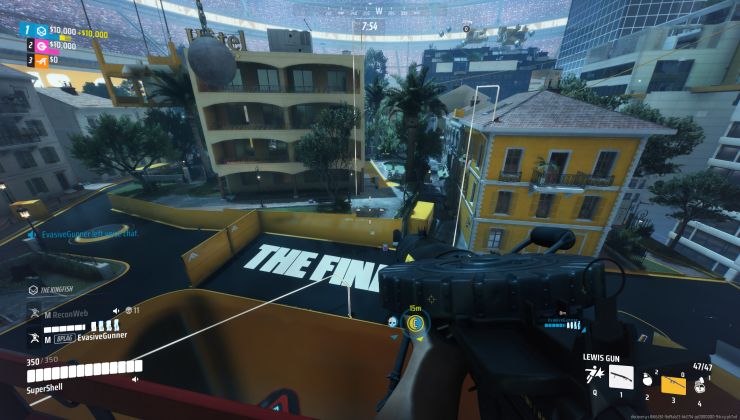
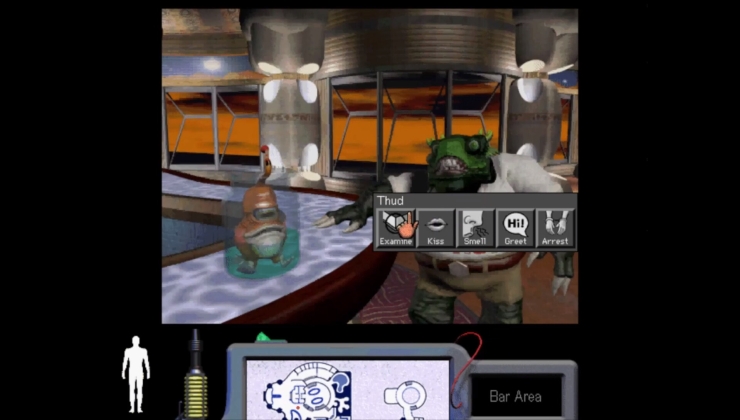

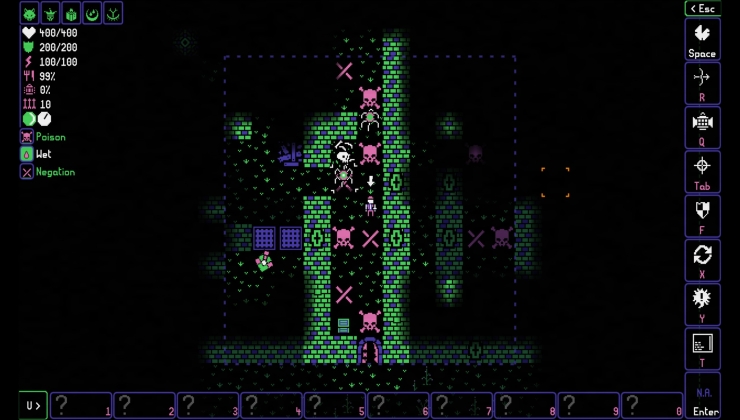






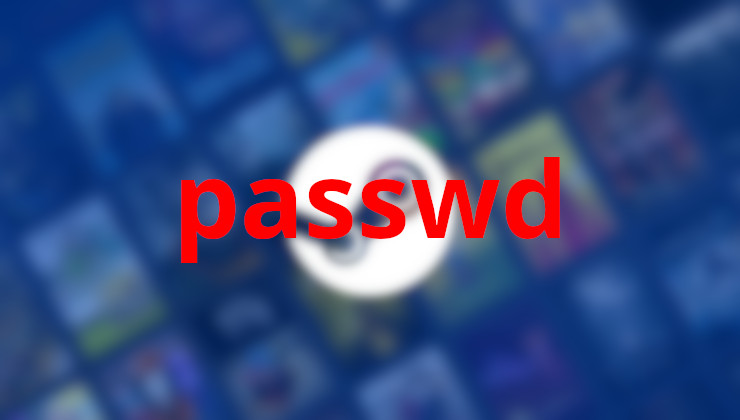 How to set, change and reset your SteamOS / Steam Deck desktop sudo password
How to set, change and reset your SteamOS / Steam Deck desktop sudo password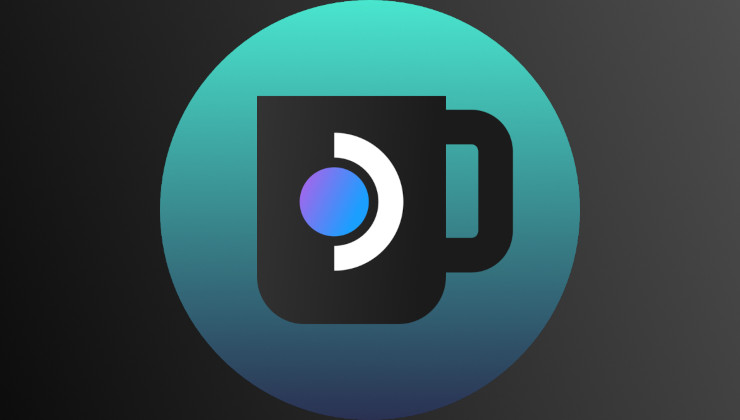 How to set up Decky Loader on Steam Deck / SteamOS for easy plugins
How to set up Decky Loader on Steam Deck / SteamOS for easy plugins
See more from me